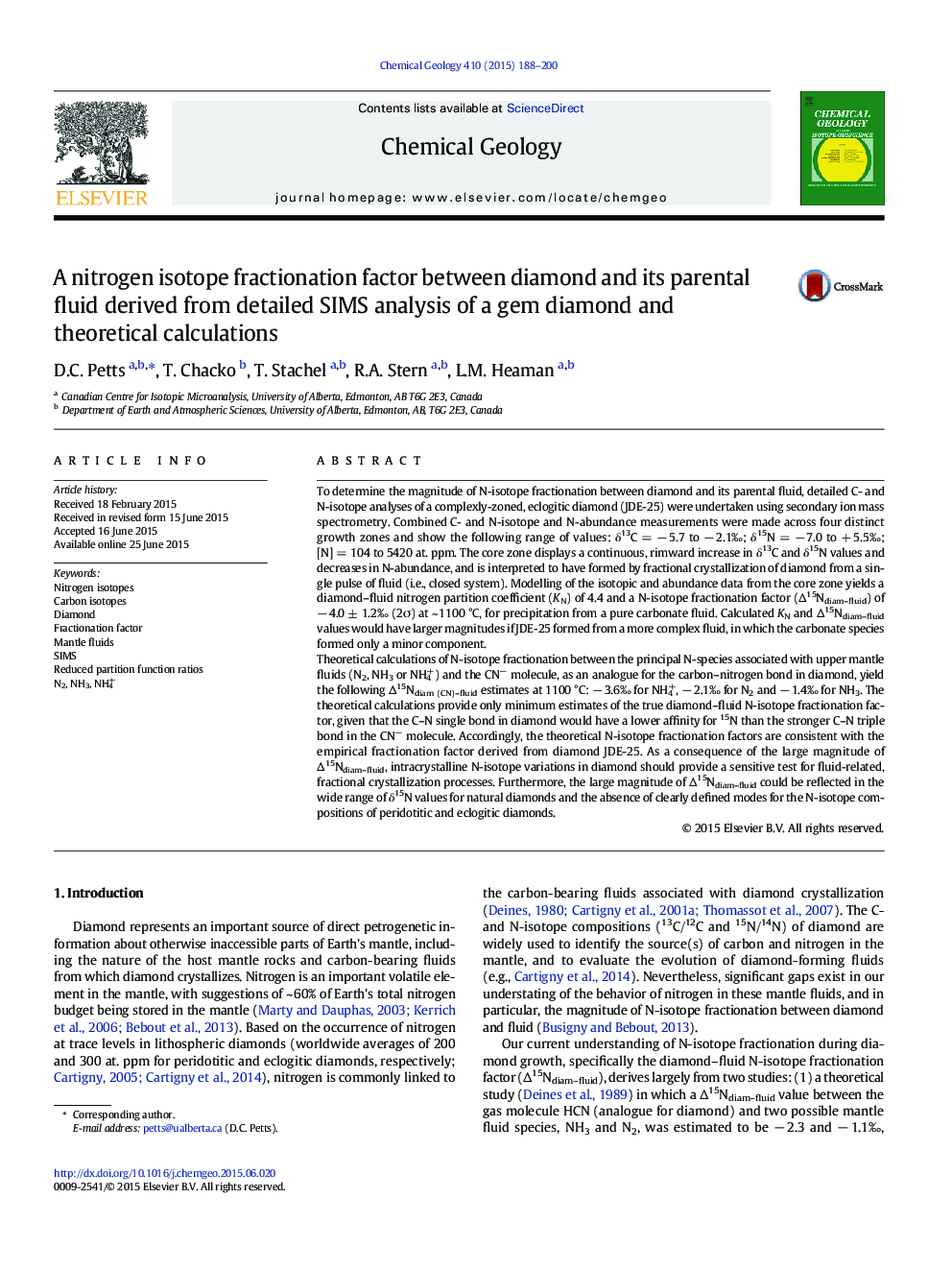| Article ID | Journal | Published Year | Pages | File Type |
|---|---|---|---|---|
| 4698494 | Chemical Geology | 2015 | 13 Pages |
•Derivation of a N-isotope fractionation factor between diamond and fluid•Empirical ∆15Ndiam–fluid value of − 4.0 ± 1.2‰ (2σ; ~ 1100 °C)•Calculations of theoretical N-isotope fractionations for NH3, N2 and NH4+ fluids•Theoretical ∆15Ndiam (CN)–fluid values of − 1.4‰ (NH3), − 2.1‰ (N2) and − 3.6‰ (NH4+)•Our results are consistent with the wide range of δ15N values in natural diamonds.
To determine the magnitude of N-isotope fractionation between diamond and its parental fluid, detailed C- and N-isotope analyses of a complexly-zoned, eclogitic diamond (JDE-25) were undertaken using secondary ion mass spectrometry. Combined C- and N-isotope and N-abundance measurements were made across four distinct growth zones and show the following range of values: δ13C = − 5.7 to − 2.1‰; δ15N = − 7.0 to + 5.5‰; [N] = 104 to 5420 at. ppm. The core zone displays a continuous, rimward increase in δ13C and δ15N values and decreases in N-abundance, and is interpreted to have formed by fractional crystallization of diamond from a single pulse of fluid (i.e., closed system). Modelling of the isotopic and abundance data from the core zone yields a diamond–fluid nitrogen partition coefficient (KN) of 4.4 and a N-isotope fractionation factor (∆15Ndiam–fluid) of − 4.0 ± 1.2‰ (2σ) at ~ 1100 °C, for precipitation from a pure carbonate fluid. Calculated KN and ∆15Ndiam–fluid values would have larger magnitudes if JDE-25 formed from a more complex fluid, in which the carbonate species formed only a minor component.Theoretical calculations of N-isotope fractionation between the principal N-species associated with upper mantle fluids (N2, NH3 or NH4+) and the CN− molecule, as an analogue for the carbon–nitrogen bond in diamond, yield the following ∆15Ndiam (CN)–fluid estimates at 1100 °C: − 3.6‰ for NH4+, − 2.1‰ for N2 and − 1.4‰ for NH3. The theoretical calculations provide only minimum estimates of the true diamond–fluid N-isotope fractionation factor, given that the C–N single bond in diamond would have a lower affinity for 15N than the stronger C–N triple bond in the CN− molecule. Accordingly, the theoretical N-isotope fractionation factors are consistent with the empirical fractionation factor derived from diamond JDE-25. As a consequence of the large magnitude of ∆15Ndiam–fluid, intracrystalline N-isotope variations in diamond should provide a sensitive test for fluid-related, fractional crystallization processes. Furthermore, the large magnitude of ∆15Ndiam–fluid could be reflected in the wide range of δ15N values for natural diamonds and the absence of clearly defined modes for the N-isotope compositions of peridotitic and eclogitic diamonds.
